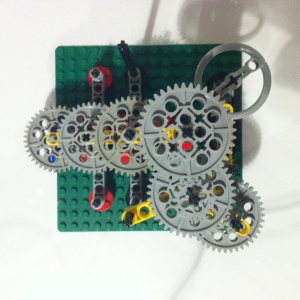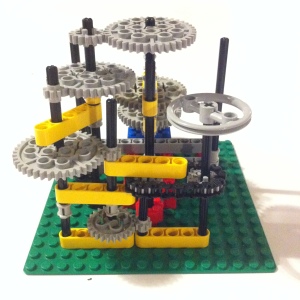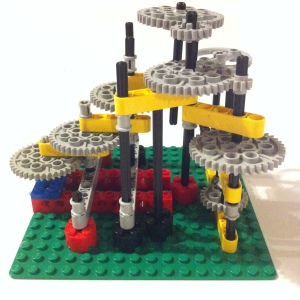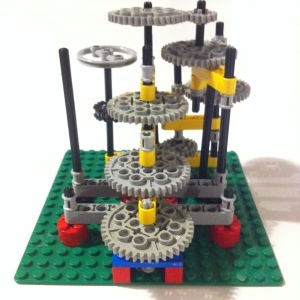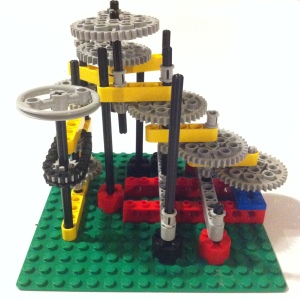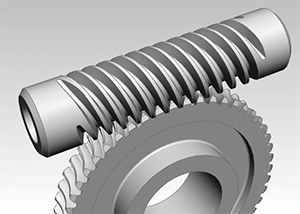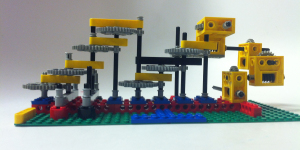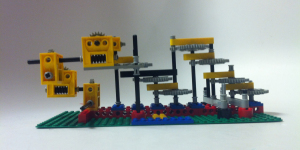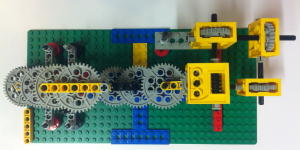For this week’s Automata homework, I experimented with extreme gear ratios. I plan to use what I learned to create a clock that will make one full rotation every trillion years. In the video above, I demonstrate my prototype device, which exhibits a combined gear ratio of 1:622080000000. The drill I am using to turn the first gear is spinning at 450 rpm. From that initial speed, translated over the course of the gear chain, the final gear on the far right will take 2630 years to make one full rotation.
The inspiration for making a trillion year clock came from a number of sources: Spin Sink by Tim Hawkinson, Machine with Concrete by Arthur Ganson, and the Clock of the Long Now. Moreover, I am fascinated by the concepts of time and scale.
One trillion years is an absurdly long amount of time, considering that scientists have measured the approximate age of the universe to be a (relatively) scant 13.5 billion years—just 1.3% of the trillion year timespan. Rather than focusing on the difficult (if not impossible) problem of finding materials and a driving mechanism that would last such a long time, I am primarily interested in finding a compact combination of gears that will provide the requisite speed reduction.
I started my exploration by playing with Lego gears. I began with combinations of compound gears, hoping to discover the point at which rotation would no longer be visible. Each of the large gears has 40 teeth, and each of the small gears has 8 teeth, creating a gear ratio of 1:5 for each compound gear pair. After stacking four of these compound gears, and rotating the first gear by hand, it was no longer possible to see the final gear rotating. I continued adding gears until I ran out of space on the Lego board.
After creating this initial prototype device, I did some research and some math. I found gears for sale online that would allow me to create compound gears with a 1:10 ratio. Stacking 20 of these compound gears would provide a combined ratio of 1:10^20. With such a gear ratio, an initial rotation speed of one turn per second would translate to a final rotation speed of one turn every 3.17 trillion years.
I then began reading about worm gears. Worm gears are effectively single tooth gears, allowing for more dramatic gear ratios contained within smaller amounts of space. Using worm gears with a 1:100 ratio for each pair of gears, the 1:10^20 final ratio described above would require only 10 pairs of gears.
With my newfound perspective, I returned to the Lego sets with the intention of making the most extreme possible gear ratio with the parts available. After scouring the 6 Lego kits in the ITP equipment room for every large gear, small gear, worm gear, and worm gear box, I constructed the device pictured in the video above.
The device consists of 7 pairs of compound gears, each with a 1:5 gear ratio, and 5 pairs of worm gears, each with a 1:24 gear ratio. The resulting combined gear ratio is calculated as: 1:(5^7*24^5) or 1:622080000000.
Working with Legos helped me visualize the spacial configuration possibilities for a trillion year clock. If I move forward with the project, I plan to fabricate the support structures and gear boxes, and possibly the gears themselves.
